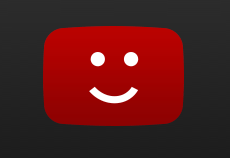 In 2016, the European Commission announced plans to modernize EU copyright law.
In 2016, the European Commission announced plans to modernize EU copyright law.
Article 13 of the new Copyright Directive, which was later renamed Article 17, raised alarm bells around the world. If adopted, many online services would be required to license content from copyright holders and where that was not possible, content would have to be automatically removed and not re-uploaded.
The passing of the Copyright Directive in March 2019 made Article 17 a pending legal requirement along with the prospect of “upload filters” – mechanisms that aim to prevent infringing content appearing online at all.
However, the question of how this type of system will be implemented in practice remains largely unanswered and after the European Commission launched a public consultation last July, it was clear that the debate rages on.
Broadly speaking, copyright holders would prefer all contentious content to be removed immediately and only put back when it turns out to be legitimate. Opponents of filtering believe that the balance should shift the other way, with only “manifestly infringing” content being disappeared and everything below that threshold being subjected to human review.
YouTube Has Always Been Central To The ‘Filter’ Debate
Copyright holders, especially those in the music industry, have always been critical of YouTube and its millions of users who sometimes upload allegedly-infringing content. YouTube insists it is ahead of the curve here, investing more than $100m in its Content ID system that recognizes infringing content and deals with the vast majority of claims, allowing monetization or delisting, as required by rightsholders.
However, Content ID only kicks in after users upload their videos, meaning that it is possible for allegedly-infringing content to appear on the platform for a while. If timing is a key factor, this isn’t a proactive step at the upload stage, i.e it doesn’t prevent content from appearing on YouTube, so isn’t an “upload filter” per se.
But what if the timing of Content ID was switched around, so that instead of checks being made after the content appears on YouTube, they were made during the upload process? Would that constitute an upload filter? Probably. However, according to a relatively quiet announcement by YouTube, this type of process (one that has been widely feared by YouTube users) can be viewed in a more positive light.
YouTube Announces YouTube “Checks”
This week YouTube revealed that a new feature had been added to the “Upload flow” on desktop. Named “Checks”, the system is described as a tool to automatically screen uploads for potential copyright claims and ad suitability restrictions before publishing, to the benefit of YouTube users.
“This new step will help you minimize the number of videos uploaded with copyright claims and/or yellow icons and avoid surprises or worries,” YouTube Community Manager ‘Sarah’ explained.
The way “Checks” works is simple. During the upload process, users are given an option to have their videos scanned for issues, presumably with the assistance of Content ID. The checks for copyright compliance reportedly take place within a three-minute window while monetization checks can take a couple of minutes longer.
“You can use the checks page to screen your video for copyright claims and if you’re in the YouTube Partner Program, ad suitability. The Copyright check allows you to dispute a claim or edit and fix your video if issues are found,” YouTube’s Help Center article reads.
In other words, the “Checks” feature acts as a pre-publishing screening tool, one that spots copyright issues in advance of content appearing on YouTube, in a similar way that an “upload filter” might. While YouTube didn’t make any big announcements, the rollout didn’t go unnoticed.
YouTube has a new video upload screen featuring additional copyright checks before publishing (on desktop)
h/t @YasserM86 pic.twitter.com/YR4gxdL2Na
— ? Matt Navarra (@MattNavarra) March 16, 2021
At the moment, YouTube users are still able to publish content to YouTube before these checks are completed but when that’s the case, any issues found cannot be fixed and will be dealt with later, potentially to the detriment of the uploader.
Filtering is a Feature, Not a Restriction
While one of the clear aims is to prevent potentially infringing content appearing on YouTube, “Checks” is being promoted more as a tool to assist uploaders rather than copyright holders. Not only will users be able to see if a copyright holder objects to their content before it is published, in theory they should be able to avoid demonetization and strikes too.
The tool will provide advance warning of which parts of a video are likely to trigger an issue, so that uploaders can go away and make the necessary changes to their videos before attempting to publish. This doesn’t mean they won’t get copyright claimed later on but the idea is that overall claims should be reduced.
Checks and Review
One of the key fears concerning upload filters is that automatic systems don’t always have the ability to determine when copyrighted content has been used in a legal way, so-called fair use. YouTube “Checks” doesn’t seem to get any closer to solving that problem.
When a copyright clash is found in an uploaded video, the “Checks” system will allow the uploader to either carry out edits or dispute the claim. YouTube doesn’t go into much detail here but it sounds like uploaders will have to state their position and ask for some kind of permission to go ahead, in order to avoid a claim moving forward.
Human review for copyright claims isn’t touted as one of the features but YouTube says that its staff will look over issues that arise in respect of its ad suitability check, if users think its “systems made a mistake.”





